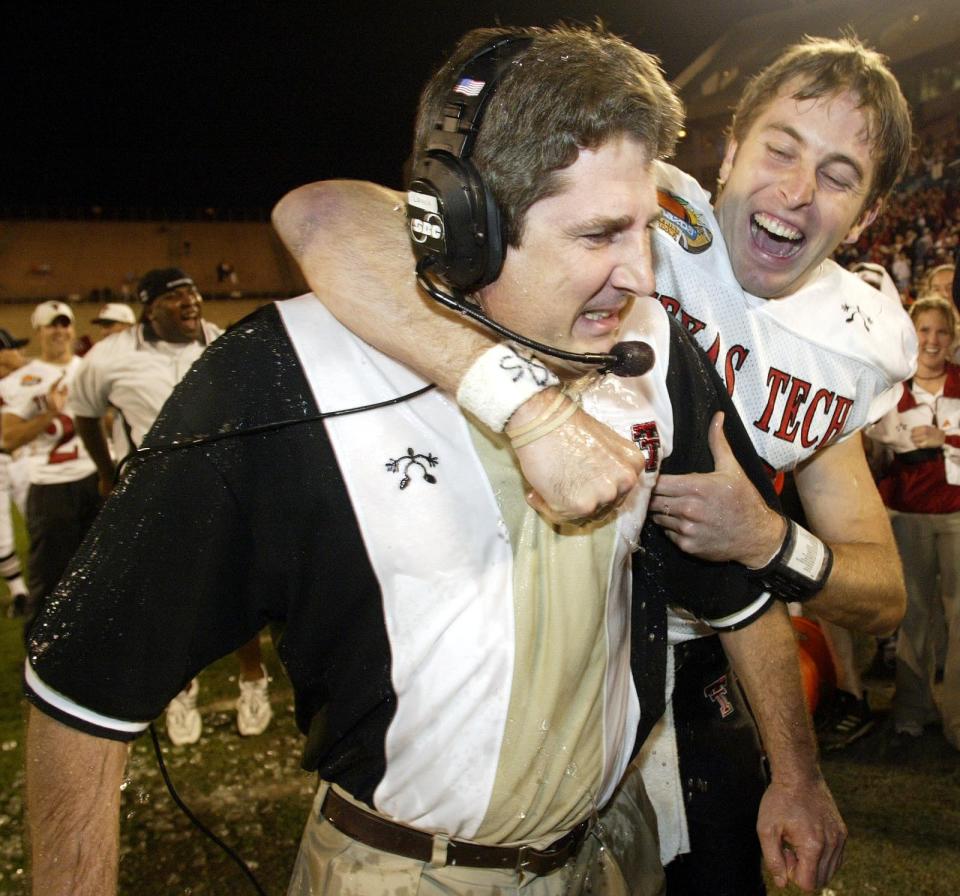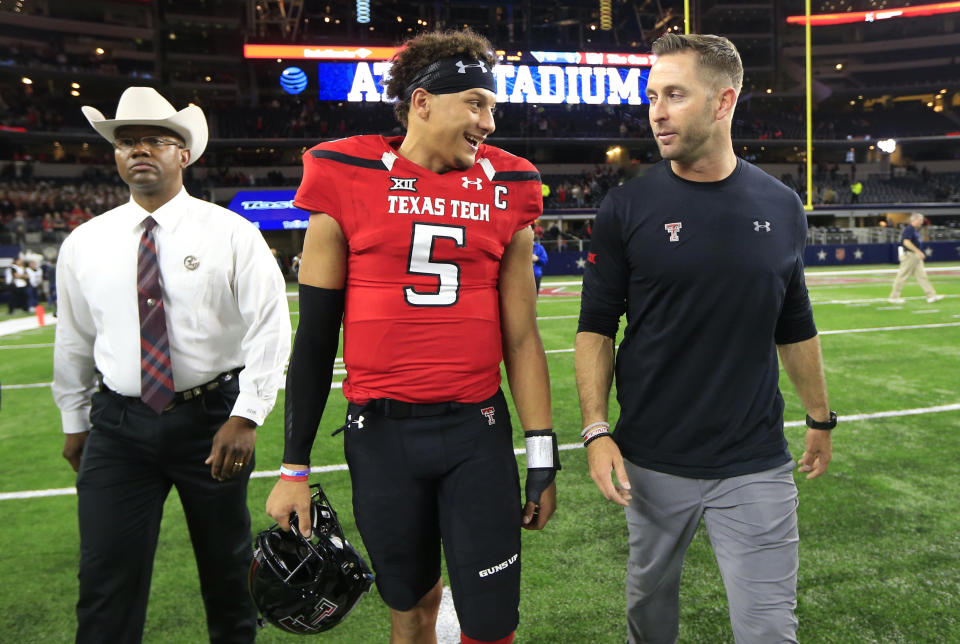Mississippi State head coach Mike Leach died this week, generating a well-deserved outpouring of not just sympathy, but appreciation for his impact on the game of football.
From his former players and assistants becoming prominent coaches (Lincoln Riley, Josh Heupel, Kliff Kingsbury) to the way his Air-Raid offense changed football from high school to the NFL (five-wide formations, fourth-down aggressiveness), nothing is quite the same.
Yet what Leach’s mold-breaking concepts did extend beyond even that.
Consider that his style — or more accurately his thinking — isn’t just responsible for how, say, Patrick Mahomes plays football, but arguably that Patrick Mahomes even plays football at all.
Mahomes is one the NFL’s most exciting and marketable stars. He and Leach never met. Yet without Leach, it’s fair to wonder if Mahomes might have capped out as a college player or be playing a different position, let alone a different sport altogether, rather than lighting up the NFL like few ever have.
Go back to 2012, Mahomes’ junior season at Whitehouse (Texas) High School. He played safety as a sophomore before becoming the Whitehouse quarterback.
Leach was coaching Washington State at the time, but during his time (2000-2009) at Texas Tech, he had installed the Air Raid offense. Mahomes’ high school coach, Adam Cook, had gone to Tech and installed a version of the system at Whitehouse.


The Air Raid tends to favor smart, instinctive quarterbacks. Mahomes wasn’t the most polished player at the time. He was a three-sport star, which meant he spent his offseason playing basketball and baseball, not working with a throwing specialist, attending combines or playing endless 7-on-7 games.
He was, however, adaptive, intelligent and extremely competitive. In the most basic of terms, the Air Raid favors those characteristics. A more old-school, pro-style offense might not have worked for him.
“Coach Adam Cook was the first guy to show me the quarterback position,” Mahomes said. “He didn’t force me to be a certain type of quarterback, he let me go out there and just play the game how I like to play it.”
Mahomes threw for 3,839 yards and 46 touchdowns that season as a high school junior. He also rushed for 258 yards and six more scores. As a senior he threw for over 4,600 yards and 50 touchdowns.
“He was just always making the right decisions,” Cook said.
The junior year alone was enough to attract the attention of college football recruiters, but there were still questions about Mahomes’ future. The Air Raid was still considered a bit of a gimmick. If your team didn’t run it, could the QB adapt? Was Mahomes just a system quarterback? Was he even a quarterback?
Mahomes’ father, Pat, once told the Lubbock Avalanche-Journal that the University of Texas recruited his son to play safety, seeing him more as an athlete. Other schools were scared off by the belief that Patrick would focus on baseball — so banking on him becoming a starting quarterback was risky.
Kliff Kingsbury was the head coach at Texas Tech at the time. He had played for the Red Raiders and was Leach’s first quarterback from 2000-2002. He saw everything through the prism of the Air Raid and thus saw Mahomes not just as a quarterback, but perhaps the perfect quarterback.
“Dynamic athlete,” Kingsbury said at the time. “And he’s a winner. You watch him play and he willed his team over and over.”


In other words, this was no safety. This was putting the best player in the most important spot. Undeterred by Mahomes possibly choosing baseball (he would later be drafted by the Detroit Tigers), Kingsbury told Mahomes to come to Tech and play both sports.
Mahomes quickly committed, and began trying to incorporate what they did at Tech with what he was doing at Whitehouse.
“My coach in high school went to Texas Tech, so he kind of had that same style of offense.” Mahomes said this week. “[When] I went on visits there, I was trying to learn what they were doing to add it into our offense.”
Once he got to Texas Tech, Mahomes became a starter as a freshman. He quit baseball as a sophomore to concentrate on football. In his final two seasons, running Mike Leach’s Air Raid offense, he threw for 9,705 yards and 77 touchdowns. Kansas City drafted him 10th overall in 2017.
“Coach Kingsbury took me from an athlete, a baseball player on the field, to making me a quarterback,” Mahomes said. “He taught me how to go through progressions, taught me to read coverages and just built me up.”
He was named NFL MVP in his first season as a starter and won the Super Bowl in his second.
“I learned from Coach Kingsbury, so I feel like I’ve learned from Mike Leach himself,” Mahomes added this week.
Mahomes is, obviously, one of the greatest athletes in the world. Yet if not for Mike Leach redefining how offensive football is played and the characteristics a quarterback needs to succeed at the position, is he playing quarterback in the NFL? Is he playing football at all? Would he have just been a good high school or college safety before choosing to focus on baseball?
It’s not a stretch to wonder.
